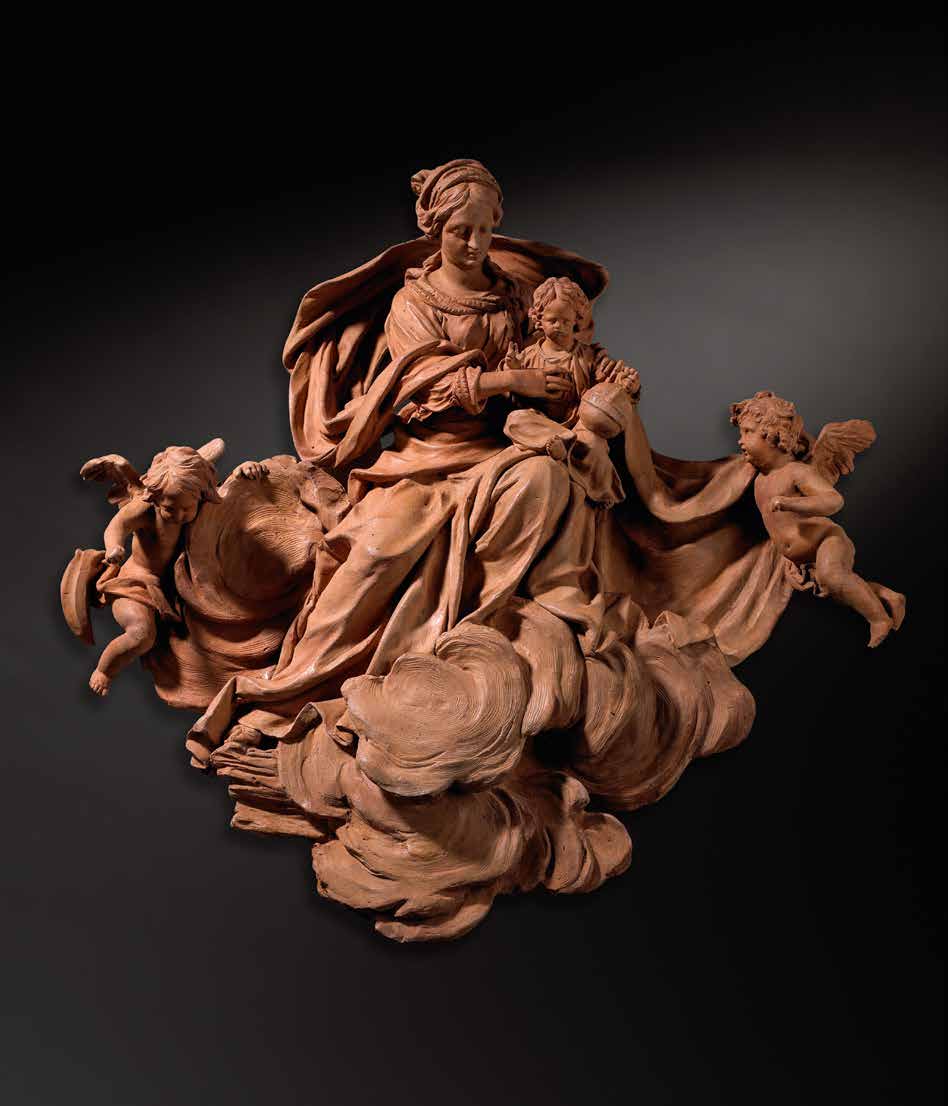Peter Scheemaeckers the Elder's Virgin and Child
 This large terracotta sculpture is a model for a work that is lost or was never executed, or the project was altered to such an extent that this model has not been connected with it. As was the practice in the Low Countries, models were made in terracotta for finished works in wood or marble. The Virgin and Child would have been situated high in a church, as is proven by the optimum angle of view, from below. Figures seated on clouds would appear to float on the pediment of an altar, a pulpit, or a tomb. A comparable model is now in the Fitzwilliam Museum, Cambridge University, and shows the Virgin and Chld with three putto heads peeping out of the clouds; it measures 70 x 49.5 cm, and is known to have been for an existing sculpture in the Church of St. Martin’s in Heers (Limburg), commissioned by the Duchess of Arenburg in 1702. Its stylistic similarity with the Princeton model has furnished the date for ours.
This large terracotta sculpture is a model for a work that is lost or was never executed, or the project was altered to such an extent that this model has not been connected with it. As was the practice in the Low Countries, models were made in terracotta for finished works in wood or marble. The Virgin and Child would have been situated high in a church, as is proven by the optimum angle of view, from below. Figures seated on clouds would appear to float on the pediment of an altar, a pulpit, or a tomb. A comparable model is now in the Fitzwilliam Museum, Cambridge University, and shows the Virgin and Chld with three putto heads peeping out of the clouds; it measures 70 x 49.5 cm, and is known to have been for an existing sculpture in the Church of St. Martin’s in Heers (Limburg), commissioned by the Duchess of Arenburg in 1702. Its stylistic similarity with the Princeton model has furnished the date for ours.
The upper bodies of the Virgin and Child and angels are composed in the round, while the lower bodies are in relief. The Virgin and Child thus lean forward and would have been fully visible to the viewer below. The Virgin in this composition addresses both the Child and the viewer below, while the Child gestures in blessing. The Child also carries the orb, indicating he is the Salvator Mundi. The two angels quote the putti of the Flemish Baroque master François Duquesnoy (1597–1643).
The Museum already owns Flemish marble sculptures of the Four Continents attributed to Jan Claudius de Cock (1667–1735), a contemporary Antwerp sculptor. The new Scheemaekers sculpture adds to our Northern Baroque holdings, demonstrates another use for terracotta as part of a sculptural process, and adds an example of Christ as Salvator Mundi to our rich representation of images of Christ.